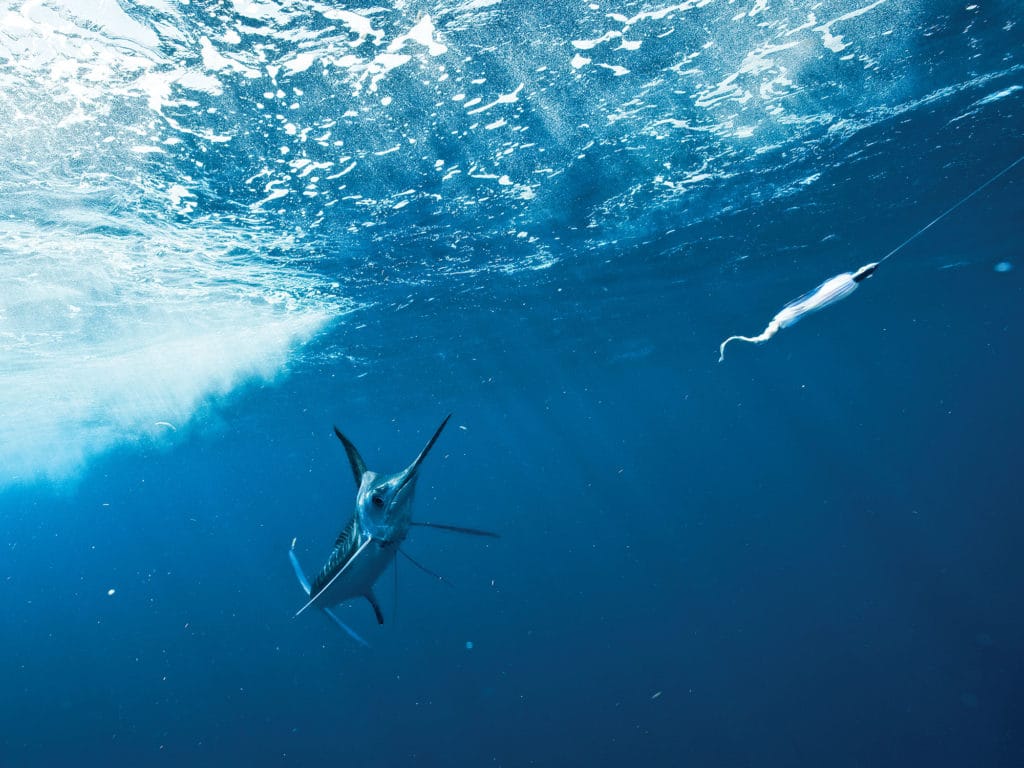
There’s no doubt about the efficiency of hooking billfish using the bait-and-switch method, where the angler drops back a dead bait to a fish raised on a hookless teaser. Feeding a bait to a charged-up billfish just feet from your rod tip is probably the most exciting part of the sport besides grabbing the leader, which is a story for another day.
Some teams pull their pitch baits in the water just short of the teasers. Others keep their pitch baits in the cockpit, reasoning that if a blue marlin makes an appearance, it won’t get a chance to eat a bait rigged on a lighter setup and the angler can reach for the “big pitch” (usually a 50- or 80-pound outfit) to match the tackle to the size of the fish in the spread.
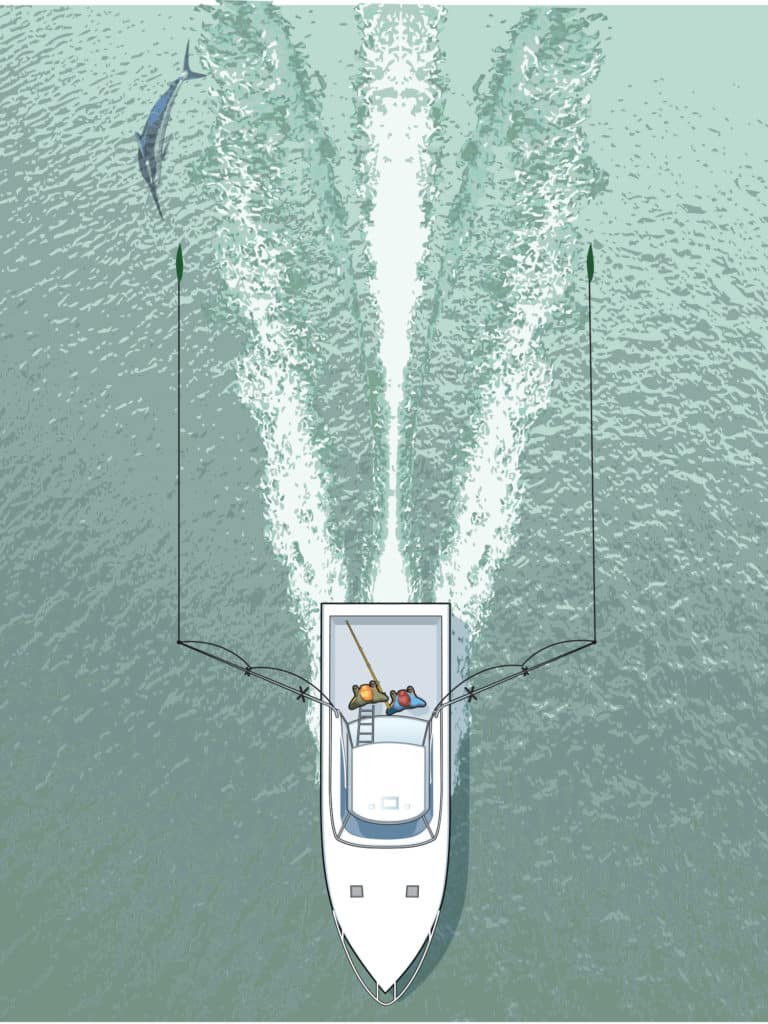
When a fish is spotted on a teaser, the angler’s first priority is to get the bait into the water and back to the teaser as quickly as possible, while the captain begins a gentle inside turn with the boat. Once the bait is in the proper position, the angler should hold the rod tip up and out to one side with their thumb on the spool and the reel in free-spool. This is called the ready position. The rod tip should be elevated just enough to keep the bait at the surface without allowing it to skip out of the water. The angler should also try to get the bait as far out to the side as possible to get it into the clean water outside the boat wake.
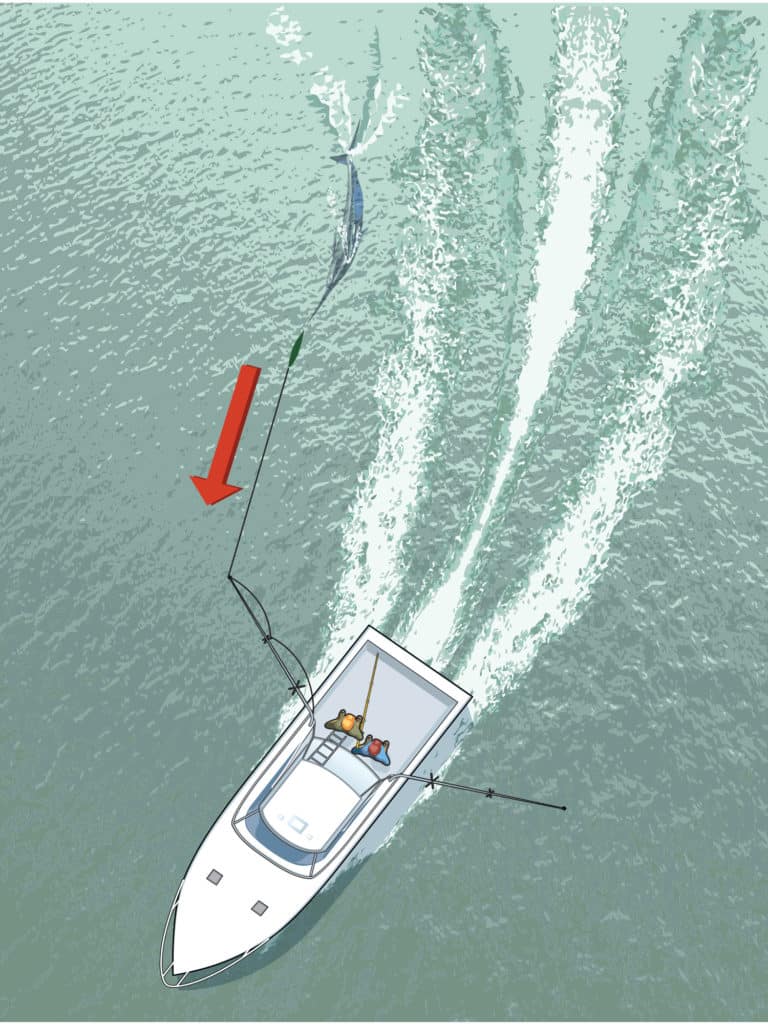
The captain or mate starts cranking the teaser in at a steady pace, keeping the fish interested, until it gets close to the angler’s bait. Once the teaser passes the bait, the crew will jerk the teaser completely out of the water and get it to the boat as quickly as possible so that the fish sees only the bait left swimming in its place.
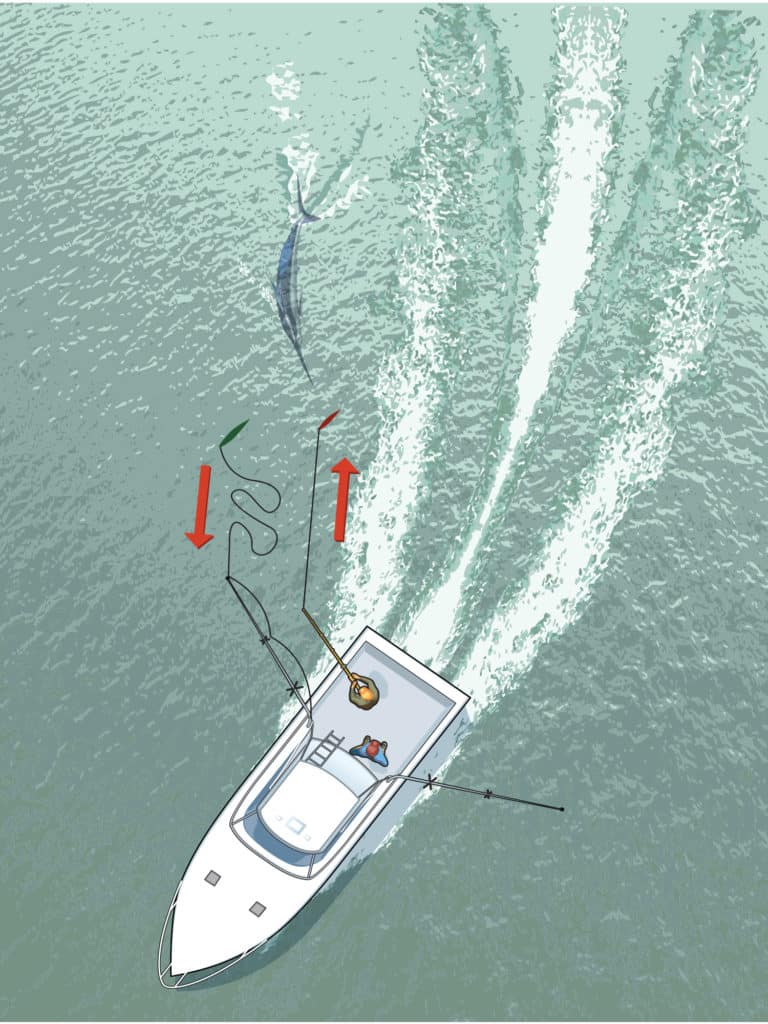
The captain or mate starts cranking the teaser in at a steady pace, keeping the fish interested, until it gets close to the angler’s bait. Once the teaser passes the bait, the crew will jerk the teaser completely out of the water and get it to the boat as quickly as possible so that the fish sees only the bait left swimming in its place. If all goes well, then the fish eats the bait and the angler feeds the fish in complete free-spool. The line should be falling off the rod tip. If the fish feels any resistance at all, it might not swallow the bait and will continue to mash it with its mouth to make sure it’s dead. If this happens, you will probably miss the fish and end up getting just the head back: the dreaded sancocho.
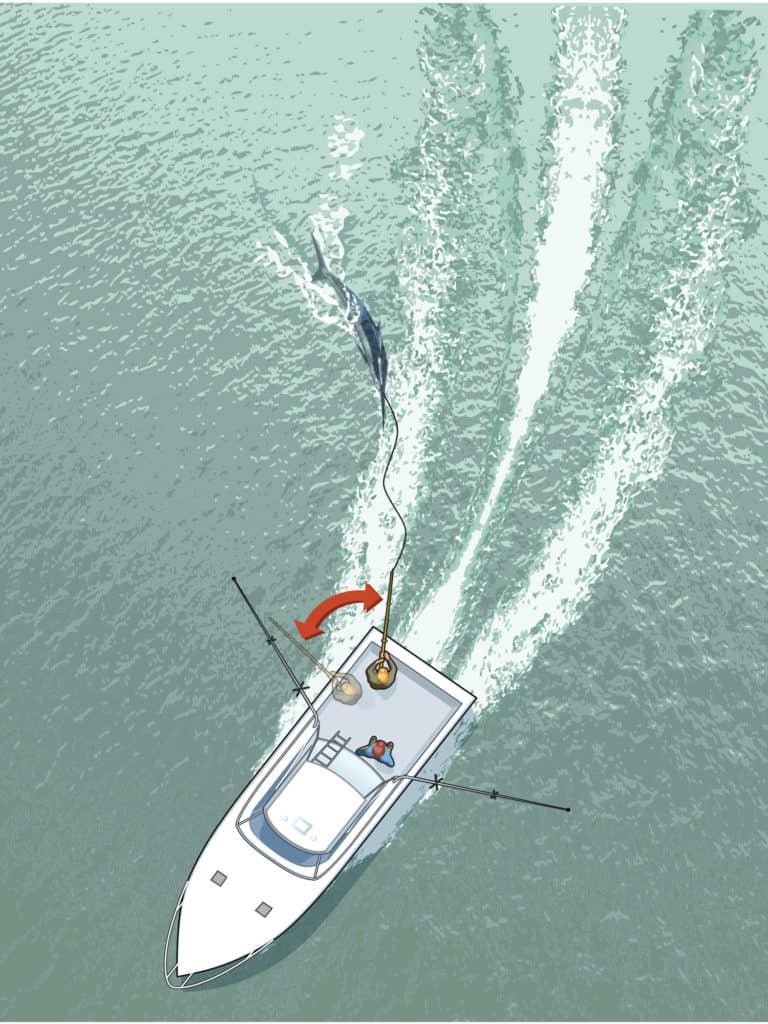
After a drop-back of five seconds or so in free-spool, the angler then engages the drag, points the rod at the fish and begins to wind slowly so that the circle hook will come to the corner of the fish’s mouth. Once the fish starts to pull drag from the reel, slowly raise the rod tip and you’ll have one on. The time of the drop-back varies from boat to boat, and I’d suggest doing what the captain says. Blue marlin do not require the same amount of drop-back as a white marlin or sailfish. Do not jerk on the rod and don’t wind too fast because either one of these can result in the circle hook missing the corner of the fish’s mouth. If the fish starts jumping before the five-second interval, then push the drag up and wind. If the fish accelerates and the reel starts to backlash, push the drag up and wind — do not try to stop the backlash with your thumb!
One trick to get your bait back quickly is to hold the rod tip close to the water so that the line and leader coming off the tip are fully submerged in the water. The extra resistance pulls the bait back much faster.
Another tip: Never take your eyes off your bait. If you are always looking at your bait, then you will always see the fish when he eats it, which gives you a much better chance of letting the spool go and feeding the fish freely. Don’t watch a fish pounding on your buddy’s teaser on the other side of the boat or you’ll miss the one that comes up and eats on your side.
Throughout the process of teasing in a hot billfish, you might hear things from the captain or crew, like, “Drop it back a bit,” or, “Wind it up a few cranks.” Just be sure that you get back into the ready position — rod tip up, thumb on, reel in free-spool — before the fish eats the bait. If you are ready for him to eat and keep your eyes on the bait, then you have a good chance of coming tight.







